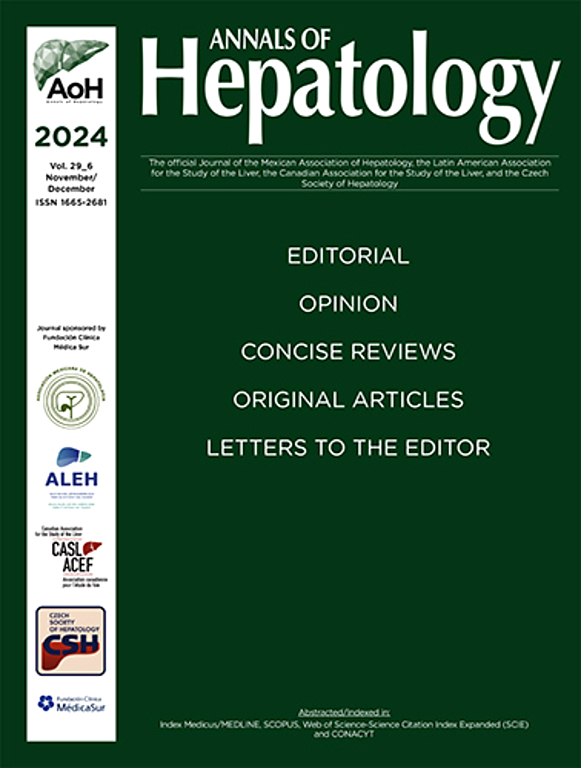P-75 INFLUENCE OF THE ARTERIAL HEPATIC FLOW IN ELASTOGRAPHY (2D SHEARWAVE) LIVER VALUES
IF 3.7
3区 医学
Q2 GASTROENTEROLOGY & HEPATOLOGY
引用次数: 0
Abstract
Conflict of interest
No
Introduction and Objectives
The liver receives blood at low pressure through the portal vein (80%). Distortion of hepatic histoarchitecture, reduces portal flow and increases hepatic arterial flow (HAF). Liver elastography (LE) non-invasively measures liver stiffness (LS), but intrahepatic and extrahepatic factors also influence LS. The velocity-time integral of the hepatic artery (HAVTI) estimates the area under the spectral Doppler curve. This study investigates the correlation between LS and HAVTI in cirrhosis patients, aiming to explain dynamic LS changes in cirrhosis and portal hypertension.
Patients / Materials and Methods
Elastography and spleno-portal Doppler were performed on cirrhosis patients under follow-up at Sanatorio Sagrado Corazón. The median of five LS measurements was determined, and the HAVTI was measured in the same study. Spearman's correlation method was used to establish the correlation between LE values and HAVTI
Results and Discussion
Twenty cirrhosis patients were evaluated (65% men), with a median age of 58 years. The most common etiology was HCV (35%), followed by alcohol use disorders (30%). Seventy percent were CHILD A (median MELD-Na 10). At the time of the study, 68.4% had experienced at least one decompensation event. We found a correlation of r = 0.65 (p = 0.004) between hepatic elastography values and HAVTI.
Conclusions
Our study demonstrates a significant correlation between LS and HAVTI in cirrhosis patients. This suggests that non-invasive HAVTI assessment may provide valuable insights into dynamic LS changes associated with cirrhosis and portal hypertension.
求助全文
约1分钟内获得全文
求助全文
来源期刊

Annals of hepatology
医学-胃肠肝病学
CiteScore
7.90
自引率
2.60%
发文量
183
审稿时长
4-8 weeks
期刊介绍:
Annals of Hepatology publishes original research on the biology and diseases of the liver in both humans and experimental models. Contributions may be submitted as regular articles. The journal also publishes concise reviews of both basic and clinical topics.
 求助内容:
求助内容: 应助结果提醒方式:
应助结果提醒方式:


